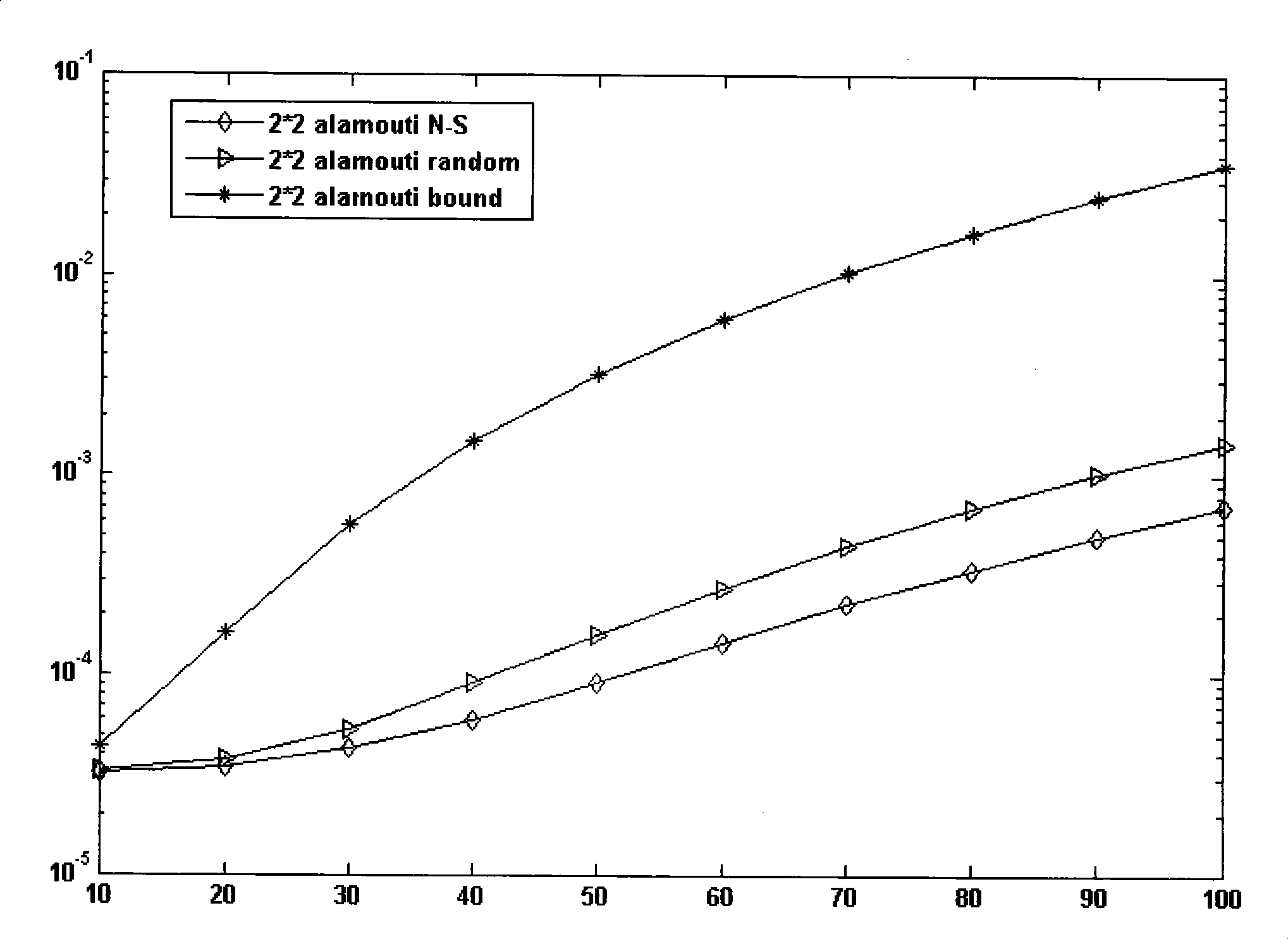Wireless sensor network node collaboration method based on feedback channel
A technology of wireless sensors and network nodes, applied in transmitter/receiver shaping network, data exchange network, transmission system, etc., can solve the problems of practical distance and no consideration, so as to reduce the transmission power and extend the network Effects of lifespan and transmission energy saving
- Summary
- Abstract
- Description
- Claims
- Application Information
AI Technical Summary
Problems solved by technology
Method used
Image
Examples
Embodiment Construction
[0016] like figure 1 As shown, it can be seen that when the distance between clusters is 100m, when the distance between clusters is 100m, the performance value of our method is about 50% better than the chernoff performance bound, and it is better than the method of randomly selecting cooperative nodes17 %.
[0017] The method steps of the present invention are:
[0018] 1) After the wireless sensor network nodes are arranged into clusters, in the transmission cluster Tx, each node According to pre-scheduled time slots Send the training sequence to the receiving cluster by broadcasting;
[0019] 2) In the receiving cluster, for each node j, 1#j N r After receiving the training sequence of Tx, the channel fading coefficient is estimated H j = [ h j 1 · · · h j...
PUM
 Login to View More
Login to View More Abstract
Description
Claims
Application Information
 Login to View More
Login to View More - R&D
- Intellectual Property
- Life Sciences
- Materials
- Tech Scout
- Unparalleled Data Quality
- Higher Quality Content
- 60% Fewer Hallucinations
Browse by: Latest US Patents, China's latest patents, Technical Efficacy Thesaurus, Application Domain, Technology Topic, Popular Technical Reports.
© 2025 PatSnap. All rights reserved.Legal|Privacy policy|Modern Slavery Act Transparency Statement|Sitemap|About US| Contact US: help@patsnap.com



